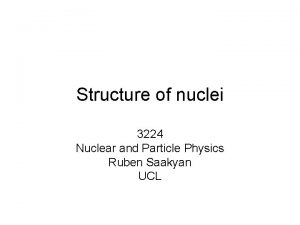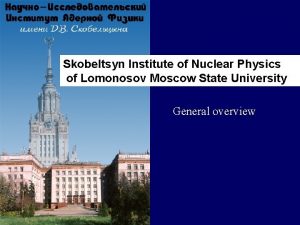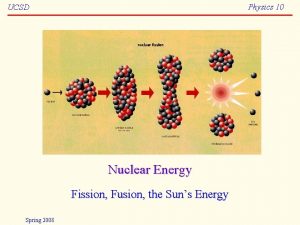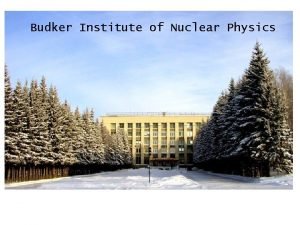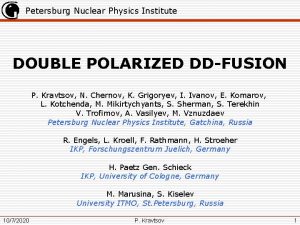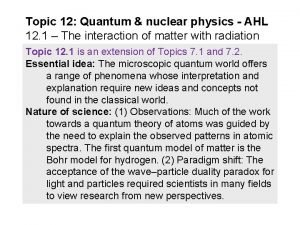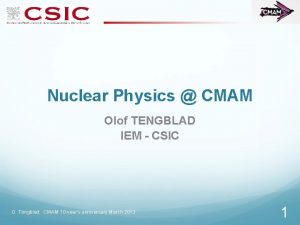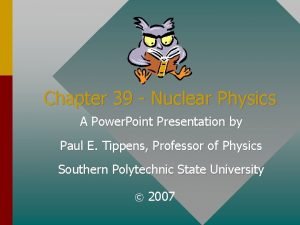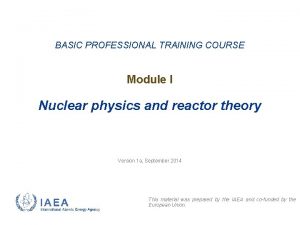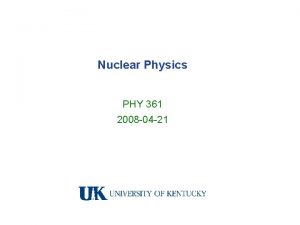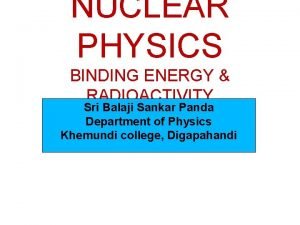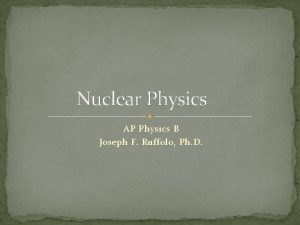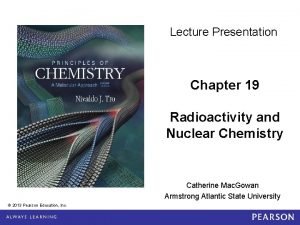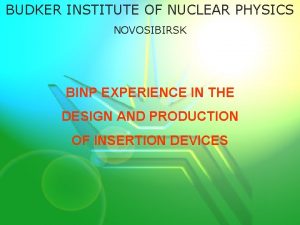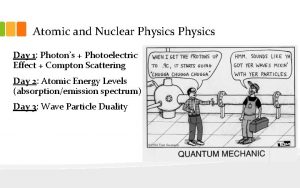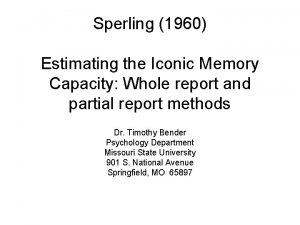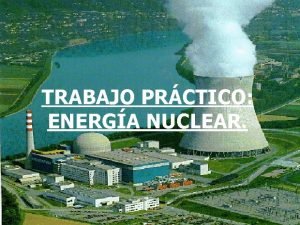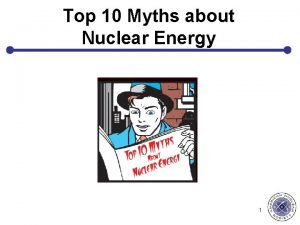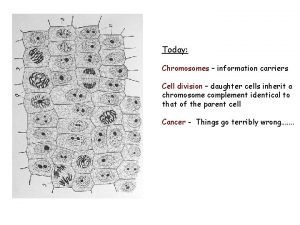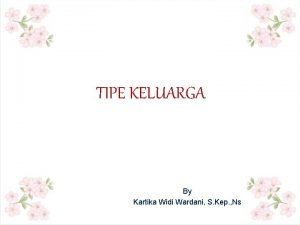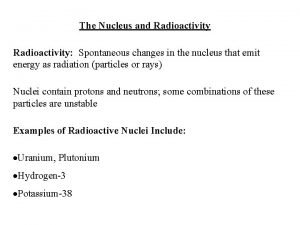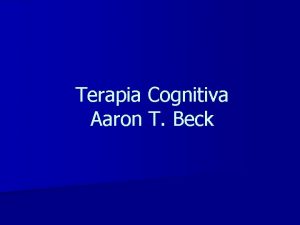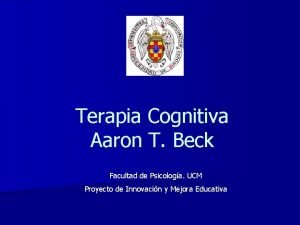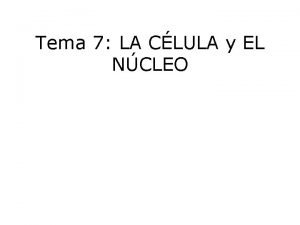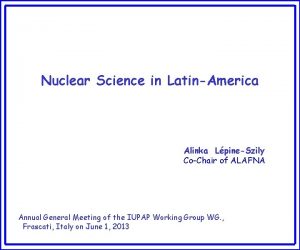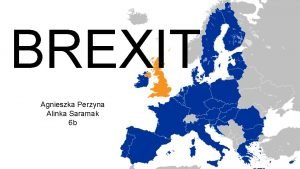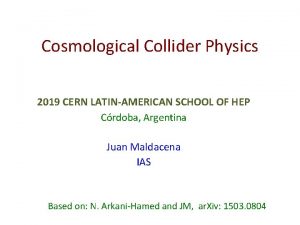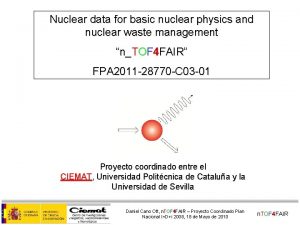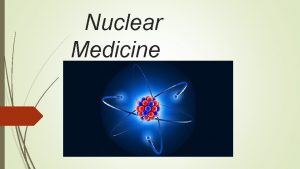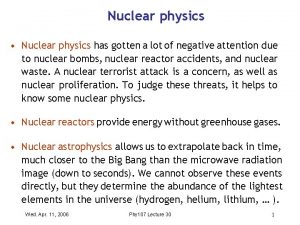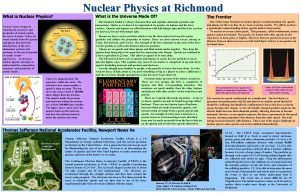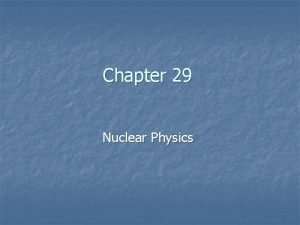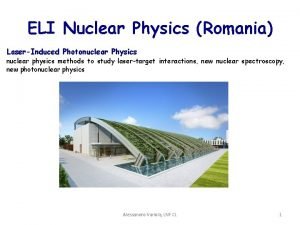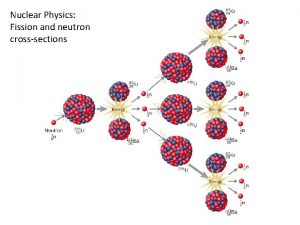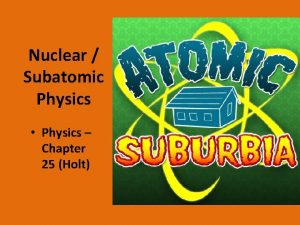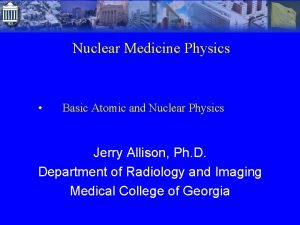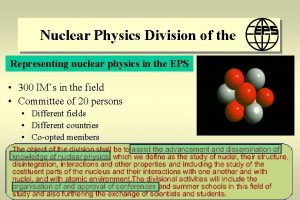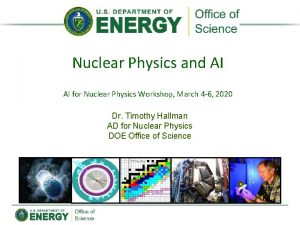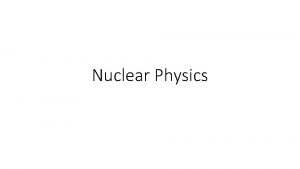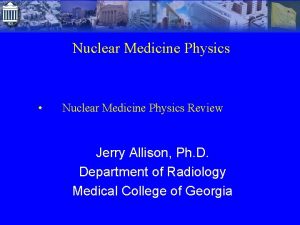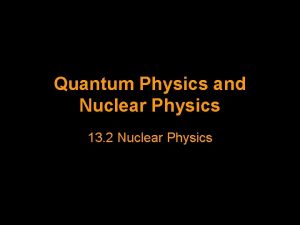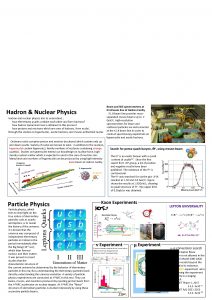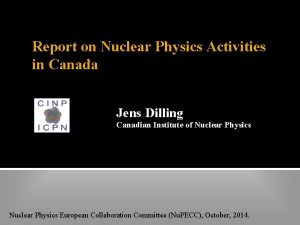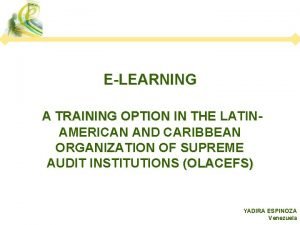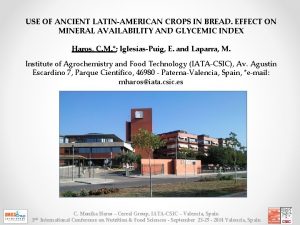Report on LatinAmerican Activities in Nuclear Physics Alinka









































- Slides: 41

Report on Latin-American Activities in Nuclear Physics Alinka Lépine-Szily Instituto de Física-USP São Paulo, Brazil IUPAP Working Group WG. 9 AGM Washington DC-SURA Headquarters, USA. June 5, 2015

News on ALAFNA: ALAFNA http: //www. alafna. net/ The “Association of Latin American Nuclear Physics and Applications” (ALANPA) was formed in Santiago, Chile on Dec. 19, 2009, by representatives of Argentina, Brazil, Chile, Colombia, Mexico, Peru and Venezuela. In Spanish is called “Asociación Latino Americana de Física Nuclear y Aplicaciones” ALAFNA In Portuguese is called “Associação Latino Americana de Física Nuclear e Aplicações” ALAFNA

Objectives of ALAFNA To strengthen ties among the Latin American Communities doing nuclear research and applications to foster collaborations and promotion of activities, To educate the scientific community and the general public through the promotion of nuclear physics and the peaceful uses of nuclear technology, To do periodic overall assessments of nuclear science in Latin America in the context of world wide activities, and To discuss at a multi-national level future planning of nuclear science activities in Latin America

Chairs of ALAFNA: • • Andrés Kreiner (Argentina) Alinka Lépine-Szily (Brazil) Executive Board • • • Fernando Cristancho (Universidad Nacional, Bogotá) Colombia Raul Donangelo (Universidad de la República, Montevideo), Uruguay Paulo Gomes (Universidad Federal Fluminense, Rio de Janeiro), Brasil Andrés Kreiner (Tandar, CNEA, Buenos Aires), Argentina Alinka Lépine-Szily (Universidade de Sao Paulo, Sao Paulo), Brasil ALAFNA homepage is installed: www. alafna. net Next meeting of ALAFNA: together with next XI LASNPA, Dec. 2015 in Medellin, Colombia. The association of ALAFNA to CLAF (Centro Latino Americano de Fisica) is in negociation.

Conferences, symposia, summer schools in 2014 -2015

COLOMBIA

Latin American Symposia on Nuclear Physics and Applications (LASNPA) 1995 1997 1999 2001 2003 2005 2007 2009 2011 2013 2015 Caracas, Venezuela San Andrés, Colombia Ciudad de México, México Santos, Brazil Iguazu, Argentina Cuzco, Peru Santiago, Chile Quito, Ecuador Montevideo, Uruguay Medellin, Colombia (IUPAP support cat. B) Scope: the dissemination of the major theoretical and experimental advances in the field of nuclear science and its applications. .

" The 11 th Latin American Symposium on Nuclear Physics and Applications " • The Symposium will be held on Nov. 30 – Dec. 4, 2015 in Medellín, Colombia. • The symposium will be preceded by a School on Medical Physics, on November 27 -28, 2015. • The symposium is supported by IUPAP as Category B Local Organizing Committee • Universidad Nacional de Colombia, Bogotá • Universidad Nacional de Colombia, Medellín • Universidad de Antioquia, Medellín • Universidad de los Andes, Bogotá

Topics of the Symposium • Nuclear Structure, Nuclear Reactions and Exotic Nuclei • Nuclear Astrophysics, Cosmic Rays • Hadron Structure, Phases of Nuclear Matter, QCD • Tests of Fundamental Symmetries and Properties of Neutrinos • Nuclear Instrumentation and Facilities • Applications in Medicine, Art/Archaeology, Energy, Space and Security

International Advisory Commitee Andreoiu, Corina (Simon Fraser University, Canada) Aprahamian, Ani (University of Notre Dame, USA) Arellano, Hugo (Universidad de Chile, Chile) Bertulani, Carlos (Texas A&M University, USA) Bijker, Roelof (Universidad Nacional Autonóma de México, México) Brandan, María Ester (Universidad Nacional Autonóma de México, México) Brooks, Will (Universidad Santa María, Chile) Canto, Luiz Felipe (Universidade Federale Rio de Janeiro, Brazil) Casten, Rick (Yale University, USA) Civitarese, Osvaldo (Universidad Nacional de La Plata, Argentina) Cole, Philip (Idaho State Universiy, USA) Djalali, Chaden (University of Iowa, USA) Donangelo, Raúl (Universidad de la República, Uruguay) Egido, Luis ( Universidad Autónoma de Madrid, Spain) Fahlander, Claes (Lund University, Sweden) Gadea, Andrés (Universidad de Valencia, Spain) Galindo-Uribarri, Alfredo (Oak Ridge, USA) Gomes, Paulo (Universidade Federal Fluminense, Brazil) Granja, Carlos (Czech Technical University, Czech Republic) Hjorth-Jensen, Morten (University of Oslo, Norway) Jeraj, Robert (University of Wisconsin, USA) Koester, Ulli (Institut Laue-Langevin, France) Kreiner, Andres (Comisión Nacional de Energía Atómica, Argentina) Lenzi, Silvia (Università degli Studi di Padova, Italy) Lepine-Szily, Alinka (Universidade de São Paulo, Brazil) Lister, Kim (University of Massachusetts Lowell, USA) López, Jorge (University of Texas, USA) Macchiavelli, Augusto (Berkeley Lawrence Laboratory, USA) Medina, Nilberto (Universidade de São Paulo, Brazil) Napoli, Daniel (Laboratori Nazionali di Legnaro, Italy) Naviliat-Cuncic, Oscar (Michigan State University, USA) Orlandi, Riccardo (Japan Atomic Energy Agency, Japan) Pacheco, Alberto (Comisión Nacional de Energía Atómica, Argentina) Regan, Patrick (University of Surrey, UK) Riley, Mark (Florida State University, USA) Rubio, Berta (Universidad de Valencia, Spain) Sajo-Bohus, Laszlo (Universidad Simón Bolívar, Venezuela) Smith, Elton (Jefferson Laboratory, USA) Stuchbery, Andrew (Australian National University, Asutralia) Tabor, Sam ( Florida State University, USA)

Second Andean School on Nuclear Physics http: //www. gfnun. unal. edu. co/andeanschool

LECTURES Speaker Theme Invited Talks Dr. Jurgen Gerl Gamma Applications Prof. Giuseppe Viesti Neutron Applications Prof. Noemi Koller g-Factor Prof José Oliveira Experimental Nuclear Structure Prof. Richard Laforest Medical Imaging Dr Gerfried Kumbarttzki g-Factor Dr Danas Ridikas Research Reactors Dr Judy Vyshniauskas Research Reactors J. Preston Research Reactors S. Reese Research Reactors Jaime Sandoval Research Reactors Prof. Mark Huyse Radioactive Ion Beams Speaker Theme Pr. Pavel Moskal Experimental Nuclear Physics Dr. Walter Reviol Experimental Nuclear Physics 52 participants

BRAZIL

Weakly Bound Exotic Nuclei http: //www. iip. ufrn. br/eventsdetail? inf===w. TEFUP • Workshop at International Institute of Physics (IIP), Natal, Brazil • Date: Sunday, May 24, 2015 - Saturday, May 30, 2015 • Directors: – Carlos Bertulani Department of Physics, Texas A&M University-Commerce (USA); – Paulo Gomes, Universidade Federal Fluminense (Rio de Janeiro, Brazil); – Renato Higa, USP (São Paulo, Brazil); – Alinka Lépine-Szily, USP (São Paulo, Brazil); – Ubirajara van Kolck, CNRS, Université Paris Sud (France)

IIP Mission The IIP is a research institute with an international vocation, permanently facing the frontier areas of theoretical physics. Its mission is to intensify the exchange of scientific knowledge with the international community and, in particular with the Latin American community, being a pole unifying national strategic areas of theoretical physics. The IIP should exercise national leadership and act decisively in favor of scientific development in the North and Northeast having the following permanent objectives: I – To develop and carry out scientific research on frontier theoretical physics; II – To act decisively towards the scientific development of the Country. The strategic goals of IIP are: I – to promote, periodically, international scientific meetings addressed to scientists, postgraduate students and postdoctoral researchers, in topics related to � theoretical physics; II – to promote basic research in theoretical physics; III – to establish international partnerships in order to strengthen Brazilian and Latin American participation in international research network; IV – to set up exchange programs involving researchers from abroad and from all regions of Brazil, through the development of scientific cooperation projects of short, medium and long range.

Research fields at IIP Quark, Hadron and Nuclear Physics including many body systems String Theory and Holography Strong Correlated Electron Systems Quantum Information



Brazilian Workshop on Nuclear Physics September 8 -10, 2015, Mangaratiba, RJ Participants : ~ 160 researchers and students 16 invited speakers from abroad

Invited speakers Andres Arazi (TANDAR) Cem Ozen (Kadir Has University) Dmitry Vladimirovich Kamanin (Joint Institute for Nuclear Research) Eliezer Piasetzky (Tel Aviv University) Eulogio Oset Báguena (Universitat de Valência) Filomena Nunes (Michigan State University) Francesco Becattini (University of Florence) Francesco Cappuzzello (Univ. di Catania e Laboratori Nazionali del Sud) Francesco Paolo Romano (Consiglio Nazionale delle Ricerche) Frithjof Karsch (Bielefeld Universitat) Helio Takai (Brookhaven National Laboratory) Hendric Schatz (Michigan State University) İsmail Boztosun (Akdeniz University) Matej Mayer (Max-Planck-Institut fuer Plasmaphysik) Sigurd Hofmann (GSI Helmholtz Centre e Goethe Univ. Frankfurt) Wolfgang Mittig (Michigan State University) Airton Deppman (USP) Alexandre A. P. Suaide (USP) Alinka Lepine-Szily (USP) Antonio Delfino Jr. (UFF) Armando N. Faria Aleixo (UFRJ) Brett Vern Carlson (ITA/CTA) Carla Regina Alves Carvalho (UFF) Carlos Roberto Appoloni (UEL) Celso de Camargo Barros Jr. (UFSC) Debora P. Menezes (UFSC) Enio Frota da Silveira (PUC) Ignácio A. Bediaga e Hickman (CBPF) José Roberto B. de Oliveira (USP) Luiz Felipe U. Canto (UFRJ) Mahir S. Hussein (USP) Marina Nielsen (USP) Marcia de Almeida Rizzutto (USP) Marcos A. G. Alvarez (USP) Maurício Moralles (IPEN) Nemitala Added (USP) Odair Lelis Gonçalez (IEAv) Odilon Lourenço da Silva Filho (UFSCar) Paulo Fernando P. Fichtner (UFRGS) Paulo R. Silveira Gomes (UFF) Renato Higa (USP) Ricardo Magnus Osorio Galvão (USP) Roberto Meigikos dos Anjos (UFF) Sérgio Barboza Duarte (CBPF) Tobias Frederico (ITA/CTA)

XVII Theoretical Nuclear Physics Summer School Maresias, February 22 – 28, 2015 QCD at finite temperature and density Prof. Dr. Owe Philipsen, Frankfurt University, Germany Physics of compact stars Prof. Dr. Juergen Schaffner. Bielich, Frankfurt University, Germany Theoretical aspects of low energy nuclear physics Prof. Dr. Antonio Moro, Universidad de Sevilla, Espanha Effective field theories and applications in nuclear physics Prof. Dr. Hans-Werner Hammer, Technische Universität Darmstadt, Germany Participants: 52

MEXICO List of events organized by Div. of Nuclear Physics in Mexico: - XXXVIII Simposio de Física Nuclear, Hacienda Cocoyoc, 6 -9 de enero de 2015 - XXXIX Simposio de Física. Nuclear, Hacienda Cocoyoc, 5 -8 de enero de 2016 - Programa de Estancias de Verano en el Extranjero, verano de 2016 - IX Escuela Mexicana de Fisica Nuclear, Mexico DF, 22 junio a 6 julio de 2015

Participants: 46

Invited Speakers Title Ani Aprahamian Sensitivity of the r-process to nuclear masses and beta University of Notre Dame, USA decay rates in three astrophysical scenarios. Libertad Barrón Low energy-neutrons in the study of the Hadronic for the NPDGamma Collaboration Weak Interaction: The NPDGamma Experiment Instituto de Física-UNAM, Mexico Roelof Bijker Valence and sea quarks in the nucleon Instituto de Ciencias Nucleares-UNAM Mexico Efraín Chávez Nuclear (astro)physics in the upgraded accelerator Instituto de Física-UNAM, Mexico facilities at IFUNAM. Osvaldo Civitarese On the definition of entropy for unstable states Universidad Nacional de la Plata, Argentina Eduardo Coello Pérez Electric transitions of deformed nuclei within an University of Tennessee, USA effective theory. Jerry Draayer Dominant Modes in Light Nuclei. Ab Initio View of Louisiana State University, USA Emergent Symmetries Francisco Favela Progress in the characterization of the gas jet target. Instituto de Física-UNAM, Mexico Ruben Fossion Data-adaptive unfolding of nonergodic spectra in Instituto Nacional de Geriatría and Centro de Ciencias de spectral fluctuation studies. la Complejidad-UNAM, Mexico CDCC calculations of elastic scattering angular Arturo Gómez-Camacho distributions for 6 Li with several targets using global Instituto Nacional de Investigaciones Nucleares, Mexico potentials Peter Hess Neutron stars with dark energy Instituto de Ciencias Nucleares-UNAM, Mexico Tonatiuh Jiménez-Bustamante Identified particle production in pp, p-Pb, and Pb-Pb Instituto de Ciencias Nucleares-UNAM, Mexico collisions measured with ALICE at the LHC energies Arturo Menchaca Asymmetric vs. symmetric heavy ion fusion: an old Instituto de Física-UNAM, Mexico riddle solved using macroscopic liquid drop collisions.

Stuart Pittel University of Delaware, USA W. Michael Snow Indiana University, USA Scott Suchyta NSCL, Michigan State University USA Exact solution of the pairing hamiltonian in atomic nuclei Searching for Dark Energy Using Neutron Interferometry Shape coexistence in 68 Ni Adam Szczepaniak Indiana University, USA Hadron Spectroscopy: past, present and future. Carlos Vargas Universidad Veracruzana, Mexico Microscopic study of collectivity in 160− 170 Dy nuclei Victor Velázquez Facultad de Ciencias-UNAM, Mexico Complexity, decoherence and quantum chaos in the nuclear shell model. Michael Wiescher University of Notre Dame, USA Kathrin Wimmer Central Michigan University, USA Nuclear Astrophysics Challenges at Threshold Energies. Single-particle structure of neutron-rich N=40 isotopes. Tochtli Yépez Indiana University, USA Charmonium meson and hybrid radiative transitions Kai Zuber Technische Universität Dresden, Germany Status and perspectives of double beta decay

Exchange programs

Ciência sem Fronteira -- Science without Border or Brazil’s Scientific Mobility Program http: //www. cienciasemfronteiras. gov. br/web/csf-eng/ Goals: • Promote expansion of science, technology and innovation in Brazil by means of international exchange and mobility. • increase the presence of students, scientists and industry personnel from Brazil in international institutions of excellence • encourage young talents and highly qualified researchers from abroad to work with local investigators in joint projects, contributing to the capacitation of human resources and promoting the return of Brazilian scientists working overseas, • induce the internationalization of universities and research centers in Brazil by encouraging the establishment of international partnerships.

Areas No of fellowships implemented Engineering and other technological areas 24. 260 Exact Sciences 4. 445 Health and Biomedical Sciences 9. 769 Information and Communication Technologies 3. 570 Aerospace 252 Pharmaceuticals 1. 199 Sustainable Agricultural Production 2. 195 Oil, Gas and Coal 428 Renewable Energy 687 Biotechnology 1. 411 Nanotechnology and New Materials 455 Technology for prevention and mitigation of natural 218 disasters Biodiversity and bio-prospection 801 Marine Sciences 540 Minerals 105 New technologies for constructive engineering 399 Formation of technical personnel 110

Some highlights in Nuclear Physics activities

Brazil Radioactive Ion Beams in Brazil (RIBRAS), first in Southern Hemisphere, only in Latin America. In-flight production of pure (99%) radioactive ion beams using 2 superconducting solenoids + degrader. Connected to 8 MV Pelletron Tandem. Beams of 6 He, 8 Li, 7 Be, 8 B, 10 Be, 17, 18 F etc, energies close to Coulomb barrier. Program: Fusion reactions, break-up reactions, transfer reactions of astrophysical interest. Applied Nuclear physics activity: Irradiation of electronic Circuits to qualify for satelits. Medical physics. Surface studies, Dating of archeological objects. Strong theory groups in nuclear structure(3 -body halo nuclei) Relativistic Heavy Ion Collisions astroparticle physics.

Argentina 20 MV Pelletron Tandem, stable beams, nuclear Reaction studies, fusion, break-up reactions. Strong activity in Medical Physics: construction of a high intensity low-energy proton accelerator and a SPECT tomograph for accelerator-based Boron Neutron Capture Therapy (BNCT). Accelerator Mass Spectrometry

Mexico • Nuclear structure (symmetries, cluster models, nuclear masses, double b decay) T • Hadronic physics (LE QCD, quark models) T • Cosmic rays (Pyramid of the Sun, HAWC) E International collaborations: T, E – – ALICE (IFUNAM, ICNUNAM, Cinvestav, BUAP, UAS) Auger (ICNUNAM) RIB ORNL, Notre Dame (IFUNAM, ICNUNAM) LANL (IFUNAM) • Medical physics (IFUNAM, ICNUNAM, School of Medicine UNAM, UAZ) E • Radiation physics E – RBS, PIXE, other techniques

Venezuela Applications only - Promotion of the Latin American Environmental Radiation Network to draw a Regional Radiological Map. - New equipment for multiphase fluid monitoring in oilfield exploitation. - Geochronology (IAEA project VEN/2012 - Radiobiology Chile Universidad Tecnica Federico Santa Maria – Valparaiso Theory: study of the origin of the proton spin. Neutrino physics. Analytical calculation of Feynman diagrams. Experimental: Activity at Jefferson Laboratory USA. Santiago : Applications Colombia, Peru, Cuba: Applications

Conclusions • ALAFNA is becoming formalized • Next LASNPA-Medellin, Colombia, come over • No new facilities • International Institute of Physics in Natal • Brazil’s Scientific mobility program-success

http: //www. sprace. org. br/sprace-project High Energy Physics : The São Paulo Research and Analysis Center (SPRACE) implemented in 2003, financial support from FAPESP, participation of high energy physics researchers from the State of São Paulo in DZero Collaboration at Fermilab and in Compact Muon Solenoid (CMS) Collaboration at the Large Hadron Collider (LHC) at CERN.

SPRACE associated to Heavy Ion group which explores the properties of theory of Quantum Chromodynamics (QCD), such as the confinement of quarks and gluons, and the asymptotic freedom, that explains the existence of the quark-gluon plasma (QGP), a state of matter present at the birth of the Universe. The SPRACE computing center provides more than ten Teraflops of computing power. In 2005, SPRACE became part of the Open Science Grid (OSG), a consortium of universities, national laboratories and computing centers, which share a grid infrastructure over research networks via a common middleware. It has become a Tier-2 in the hierarchical computing structure that is being used by the CMS experiment.

Production Time History Date # Nodes #Cores Mar/2004 Jun/2005 Sep/2006 Aug/2010 Mar/2012 Jun/2012 22 54 86 80 80 144 44 108 172 320 1088 HEPTFlops. Storage SPEC 06 (theoretica(TB Raw) (Ti. B) l) 113 0. 233 4 3. 4 485 1. 001 12. 4 10. 6 1, 475 2. 025 12. 4 10. 6 3, 255 3. 02 144 102. 6 3, 255 3. 02 504 378. 6 13, 698 10. 085 1, 044 787. 0 SPRACE has a strong commitment to teaching and outreach activities. At the São Paulo Research and Analysis Center (SPRACE) the International Master. Class event has been organized since 2008, always with increasing number of schools and participants. In 2014, SPRACE hosted more than 20 high schools from São Paulo and vicinities, bringing around 250 students and teachers for taking part in the three days of the event.

Conclusions • ALAFNA is becoming formalized • Next LASNPA-Medellin, Colombia, come over • International Institute of Physics in Natal • Brazil’s Scientific mobility program-success • SPRACE

Total number of implemented fellowships: 55. 657 (may 2014) Distribution per modality: Ph. D “sandwích” 15. 000 / 5. 763 Full Ph. D 4. 500 / 1. 615 Post-doctoral 6. 440 / 3. 088 Under-graduate “sandwích” 64. 000 / 45. 054

Country of destination: USA UK Canada France Australia Germany Portugal Spain Italy Ireland Hungary Holland South Corea Belgium Japan China Sweden etc 14. 983 6. 756 5. 596 5. 243 4. 168 4. 149 3. 138 2. 980 2. 254 1. 756 1. 446 1. 133 374 319 194 193 188 Gender: 44% 56% female

Second phase, announced in 2014/06/25 by president Dilma Rousseff Ciência sem Fronteiras 2. 0 beginning in 2015: Federal government will offer 100 thousand new fellowships.
 Lesson 15 nuclear quest nuclear reactions
Lesson 15 nuclear quest nuclear reactions Fisión nuclear vs fision nuclear
Fisión nuclear vs fision nuclear Quantum and nuclear physics
Quantum and nuclear physics Shell model of nucleus
Shell model of nucleus Skobeltsyn institute of nuclear physics
Skobeltsyn institute of nuclear physics Nuclear fission
Nuclear fission Scattering cross section in nuclear physics
Scattering cross section in nuclear physics Budker
Budker Petersburg nuclear physics institute
Petersburg nuclear physics institute Physics topic 12
Physics topic 12 Nuclear physics
Nuclear physics Nuclear physics topics for presentation
Nuclear physics topics for presentation Nuclear physics
Nuclear physics Nuclear physics
Nuclear physics Nuclear physics
Nuclear physics Nuclear physics b
Nuclear physics b Magic number
Magic number Nuclear physics
Nuclear physics Budker institute of nuclear physics
Budker institute of nuclear physics Nuclear physics day
Nuclear physics day Operating activities vs investing activities
Operating activities vs investing activities Indoor or outdoor sports
Indoor or outdoor sports Primary and support activities
Primary and support activities Primary and secondary activities
Primary and secondary activities Why does it happen
Why does it happen University physics with modern physics fifteenth edition
University physics with modern physics fifteenth edition Simple physics ia ideas
Simple physics ia ideas Status progress report
Status progress report Sperling letter array experiment
Sperling letter array experiment Envelope nuclear
Envelope nuclear Nmis nuclear medicine software
Nmis nuclear medicine software Natural vs artificial radioactivity
Natural vs artificial radioactivity Concepto de energia nuclear
Concepto de energia nuclear What are fuels used for
What are fuels used for Spindle fibers
Spindle fibers Keluarga usila
Keluarga usila Pros of natural gas
Pros of natural gas Cobalt-60 nuclear decay equation
Cobalt-60 nuclear decay equation Creencia nuclear
Creencia nuclear Fases de la terapia cognitiva de beck
Fases de la terapia cognitiva de beck Teoria de las panspermia
Teoria de las panspermia Conclusion on topic family
Conclusion on topic family



